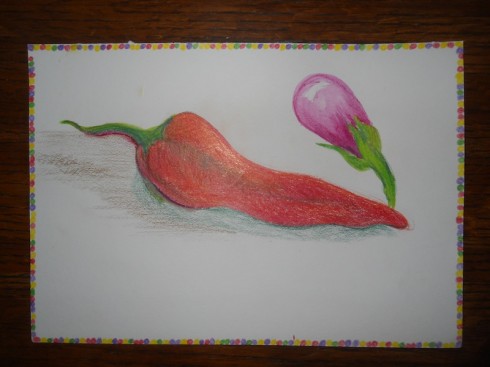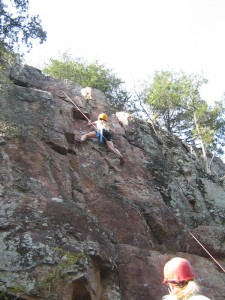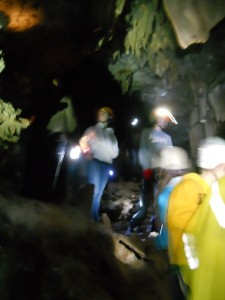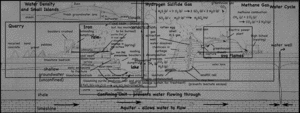
This year’s trip to the Heifer International Ranch was as excellent as it has been in the past. Students worked in their CSA garden (planting garlic and picking peppers and tomatoes for example), helped with maintenance on the grounds, assisted with taking care of their livestock, and spent a night at their global village. We saw quite the variety of spiders.
Each night, students spent a half-hour doing some reflective writing in their journals, and we had a discussion or lesson that tied into what they’d done or seen during the day.
- Sunday: The geologic and geographic importance of rivers. I’d pointed out the all the agriculture on the Arkansas river floodplain when we’d crossed it on the drive down, so we talked about how rivers erode mountains and deposit rich soils on their floodplains, and how important those floodplain and deltaic deposits have been in the emergence of civilizations and the location of cities.
- Monday: Language Arts. We took a short passage out of one of the students’ journaling to use as an apprentice sentence.
- Tuesday: Global village. Our group ended up in the Guatemalan house and the slums. The dire situation in the sums evoked some moral flexibility.
- Wednesday: Art: Drawing vegetables with watercolor and color pencils. We took advantage of having our art teacher along as one of the chaperones. Life in the slums: We also talked about the difference between our experience in the simulated global village and real life in the slums.
- Thursday: Social interaction. We were paired with the Girls’ School of Austin, who invited us over for smores after our debriefing of the week’s activities by the facilitators. Our boys, in particular, learned how to start and maintain a conversation with people of the opposite gender.
Students also had a bit of time between lunch and the afternoon activities, which they spent playing games and looking at insects under the microscope.
On the last day, we talked about giving something to the heifer facilitators. One student suggested a coded bead string, but since we did not have any beads, we went with a drawing (see above) that was bordered by a DNA sequence giving the names (and symbols) of all the water-balloon babies the group had on their visit to the global village.




